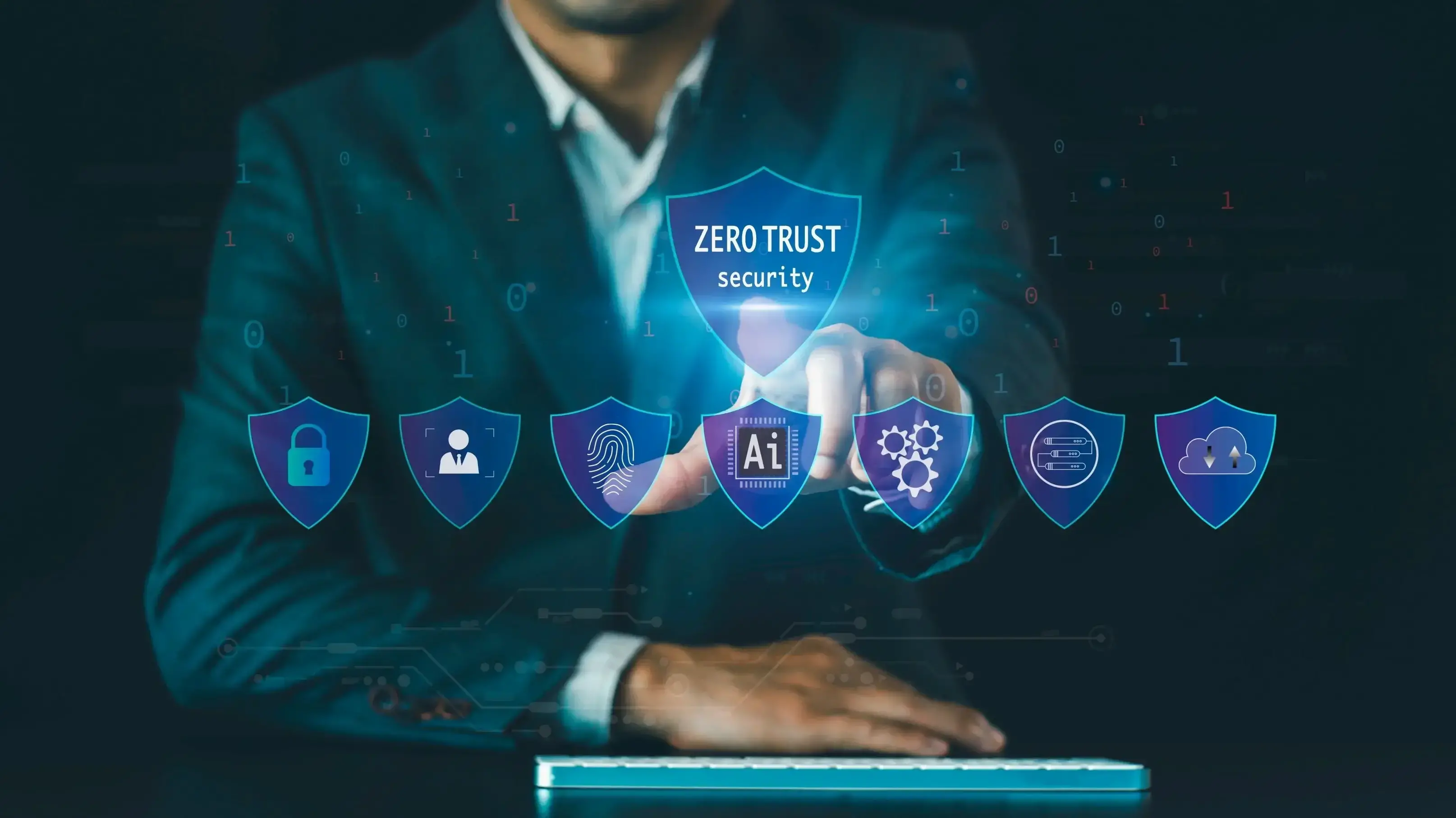In today's digital landscape, cybersecurity has become a paramount concern, particularly in hosting environments where sensitive data and critical online services are at stake.
Reseller hosting, a business model that involves selling web hosting services to clients, is no exception to these challenges.
As hosting environments continuously evolve, so do the threats they face, making it imperative to adopt advanced security models. One such model that has gained prominence in recent years is the "Zero Trust" security framework.
Cybersecurity Challenges in Hosting Environments
Hosting environments, whether they are shared, dedicated, or reseller-based, present a range of cybersecurity challenges:
Data Protection: Hosting environments store vast amounts of data, including client websites, databases, and sensitive information. Protecting this data from unauthorized access and breaches is paramount.
Multi-Tenancy: Reseller hosting often involves multiple clients sharing resources on the same server. Isolating and securing these clients' data and applications is a complex task.
Network Complexity: Hosting environments are comprised of interconnected servers, networks, and services, making them susceptible to various attack vectors such as DDoS attacks and network breaches.
Identity Management: Managing user identities and access rights is crucial. Ensuring that only authorized individuals can access resources is a significant challenge.
Evolving Threat Landscape: Cyber threats, including malware, ransomware, and phishing attacks, are constantly evolving. Staying ahead of these threats requires proactive security measures.
Zero Trust and Its Relevance to Reseller Hosting
The concept of "Zero Trust" challenges the traditional security model, which assumes that everything inside the network perimeter can be trusted. In contrast, Zero Trust advocates for a security approach where trust is never assumed, and verification is required from anyone trying to access resources inside or outside the network.
In the context of reseller hosting, Zero Trust holds immense relevance:
Identity-Centric: Zero Trust focuses on authenticating and authorizing users and devices based on their identity, regardless of their location or network. In reseller hosting, this means strict authentication for resellers and clients before accessing hosting resources.
Micro-Segmentation: Zero Trust promotes segmenting the network into smaller, isolated zones. In reseller hosting, each reseller and client operates within their designated zone, minimizing the potential for lateral movement of threats.
Continuous Monitoring: Zero Trust involves continuous monitoring and analysis of network activities, looking for anomalies and potential security breaches. This is essential in hosting environments where real-time threat detection is critical.
Least Privilege Access: The principle of least privilege is a fundamental aspect of Zero Trust. In reseller hosting, this means that access permissions are granted based on the minimum necessary level of privilege required, reducing the attack surface.
Application-Centric Security: Zero Trust adds security to web applications, which is super important in hosting. Protecting these applications against threats like SQL injection and cross-site scripting is paramount.
What is Zero Trust?
Zero Trust is a security concept that assumes no trust in any user or system, even if they are inside a company's network.
In a zero-trust model, trust is never automatically granted, and all users, devices, and systems must continuously prove their identity and meet security requirements to access resources.
Evolution from Traditional Security Models
Traditionally, security models were perimeter-based, assuming that everything inside the network was trusted, and threats were external. However, as cyber threats evolved, this model became inadequate.
The rise of remote work, cloud computing, and mobile devices blurred the network perimeter, making it challenging to protect against internal and external threats. Zero Trust emerged as a response to these challenges, recognizing that threats can come from both inside and outside the network.
The model gained prominence as organizations realized the need to move away from a "trust but verify" approach to a "never trust, always verify" mindset.Gartner predicts that by 2026, 10% of big companies will have a solid, measurable zero-trust program.
Key Principles of Zero Trust

Verify and Authenticate: Zero Trust requires strict user and device authentication before granting access to any resource, whether inside or outside the network. This ensures that only authorized entities gain access.
Least Privilege Access: Users and devices should only receive the minimum level of access necessary to perform their tasks. Unnecessary privileges are restricted to limit potential damage in case of a breach.
Micro-Segmentation: Networks are divided into small, isolated segments, each with its security controls. This limits the lateral movement of threats and contains them within specific areas.
Continuous Monitoring: Constantly monitor and analyze network activity for signs of anomalies and potential security breaches. Real-time threat detection is essential to respond promptly.
Application-Centric Security: Security controls are extended to the application layer, as many attacks target applications directly. This includes measures like web application firewalls and secure coding practices.
Data Encryption: Data is encrypted both in transit and at rest to protect it from unauthorized access. Encryption keys should be strong and regularly updated.
Security Automation: Automate security processes to respond rapidly to threats and reduce the risk of human error. Automated security tools can help enforce zero-trust principles effectively.
By adhering to these key principles, organizations can implement a zero-trust security model that enhances their security posture in an increasingly complex and interconnected digital landscape.
Why Zero Trust in Reseller Hosting?
Unique Vulnerabilities in Reseller Hosting
Multiple Clients and Varied Access Levels: Reseller hosting often involves numerous clients, each with their own websites and applications. Managing access permissions for these clients can be complex, and ensuring that they only access what they should is crucial for security.
Increased Attack Surface Due to Shared Environment: In a shared hosting environment, multiple clients share the same server resources. This shared environment creates a larger attack surface where a security breach in one client's website or application can potentially affect others.
The Increasing Sophistication of Cyber Threats
Cyber threats are continually evolving and becoming more sophisticated. Attackers use various techniques, such as malware, phishing, and zero-day exploits, to target hosting environments. Traditional security models are often inadequate in detecting and mitigating these advanced threats.
The Business Value

Beyond technicalities, zero trust has tangible benefits for the business side of reseller hosting.
Protecting Reputation: A security breach in a reseller hosting environment can lead to data loss, downtime, and damage to the hosting provider's reputation. Zero Trust helps prevent these incidents by minimizing the risk of unauthorized access and lateral movement of threats.
Reducing Financial Risks: Data breaches and security incidents can result in significant financial losses, legal fees, regulatory fines, and compensation to affected clients. Zero Trust minimizes the likelihood of these financial risks by bolstering security measures.
Ensuring Client Trust: Reseller hosting providers rely on the trust of their clients. By implementing a Zero Trust model, providers can demonstrate their commitment to security, which can attract and retain clients who value strong data protection practices.
Reseller hosting environments face unique vulnerabilities due to multiple clients and shared resources. With ever-evolving cyber threats, advanced security is crucial. Zero Trust isn't just about security; it also helps protect your reputation, save money, and gain your client's trust.
Core Components of Zero Trust in Reseller Hosting
Identity and Access Management (IAM)
In reseller hosting, verifying every user is critical. We need to make sure that each person or system trying to access resources is genuinely who they claim to be. This helps prevent unauthorized access and ensures that only trusted individuals can use the hosting services.
Micro-Segmentation
Micro-segmentation involves dividing the network into smaller, isolated zones. This creates digital barriers that make it challenging for attackers to move around once they breach one area.
Endpoint Security
Endpoint security focuses on securing all devices(computers, smartphones, etc..) that connect to the network. It is essential to ensure that each device is protected with the latest security software, antivirus programs, and security patches. This prevents malware and threats from entering our hosting environment through these devices.
Continuous Monitoring & Analytics
Continuous monitoring is like having a security guard watching the premises 24/7. In reseller hosting, it means we are always keeping an eye on network activities for anything unusual. This real-time monitoring helps us quickly detect and respond to any security threats or breaches, minimizing potential damage.
Implementing Zero Trust in Reseller Hosting: A Step-by-step Guide

Step 1: Asset Identification
Knowing what needs protection is vital. Identify all the assets in your hosting environment, including client data, applications, and server resources. This step helps you prioritize what's most important to safeguard.
Step 2: Mapping Data Flows and Dependencies
Understanding how data moves around your hosting environment is crucial. Create a map of data flows and dependencies to see how different assets are connected. This map will inform your policies and security measures.
Start by charting the journey of data – from client access requests to the storage and processing of their resources. Identify the touchpoints, dependencies, and interactions along the way. This mapping helps you pinpoint potential vulnerabilities and areas where unauthorized access could occur.
Step 3: Define Access Policies
Set clear access policies based on the principles of least privilege and need-to-know. This means granting users and systems only the minimum access necessary to perform their tasks. By limiting access, you reduce the attack surface.
Step 4: Deploy Security Solutions
Implement security tools to enforce Zero Trust. Consider options like multi-factor authentication (MFA) to verify user identities, encryption tools to protect data, and intrusion detection systems to spot threats early. These solutions bolster your security.
Step 5: Continuous Monitoring and Improvement
Security is an ongoing process. Continuously monitor your hosting environment for any unusual activity or potential threats. Regularly review and adapt your security measures to counter new threats as they emerge. Stay flexible and ready to enhance your defences.
By following these steps, you can gradually implement a Zero Trust approach in your reseller hosting environment, improving security and better protecting your clients' data and services.
Challenges and Considerations
Initial Implementation Complexities
Implementing Zero Trust in reseller hosting may be complex initially. It involves assessing existing systems, setting up new security measures, and educating staff and clients about the changes. It is essential to plan carefully and allocate resources for a smooth transition.
Need for Ongoing Training and Awareness
Zero Trust requires continuous user training and awareness programs. Users must understand the new security protocols, like multi-factor authentication, and be aware of potential threats. Regular training keeps everyone vigilant and informed.
Ensuring Scalability While Maintaining Security
As your reseller hosting business grows, you must ensure that your security measures can scale accordingly. This means the security solutions you choose should adapt to increased demands without compromising protection. Balancing scalability and security is a crucial consideration.
Balancing User Experience with Security Needs
While robust security is essential, It should not hinder the user experience. Security measures like MFA and strict access controls should be implemented thoughtfully to minimize friction for legitimate users while maximizing protection against threats.
Addressing these challenges and considerations is vital to successfully implementing and maintaining a zero-trust security model in reseller hosting. It requires a strategic approach that balances security, usability, and scalability while staying adaptable to evolving threats and needs.
Conclusion
Adopting a Zero Trust security model in reseller hosting is not just a response to the evolving cybersecurity landscape; it Is a proactive approach to safeguarding sensitive data, protecting against advanced threats, and ensuring client trust.
By following the steps outlined in our guide and addressing the associated challenges and considerations, reseller hosting providers can enhance their security posture while maintaining the flexibility and scalability necessary for business growth.
In today's digital world, where the stakes are high and threats ever-present, Zero Trust is a powerful framework that empowers hosting environments to continuously verify, adapt, and strengthen their defences to ensure a safer online experience for clients and users alike.
Frequently Asked Questions
Does implementing zero trust require a complete overhaul of our current security infrastructure?
While transitioning to zero trust involves adjustments, it does not necessarily require a complete overhaul. The principles can be gradually integrated into your existing security measures.
Will zero trust hinder user experience by adding extra layers of authentication?
Zero trust does not mean compromising user experience. The goal is to balance robust security with user convenience. Modern authentication methods and adaptive controls ensure security without causing inconvenience.
Is zero trust only relevant for larger reseller hosting businesses?
No, zero trust is relevant for businesses of all sizes. In fact, its principles can be particularly beneficial for smaller businesses with limited resources, as it focuses on protecting critical assets.
Can zero trust prevent all types of cyber threats?
While no approach can guarantee complete immunity from all threats, zero trust significantly reduces the attack surface and enhances your ability to detect and respond to potential breaches quickly.
How frequently should access policies and security solutions be reviewed and updated?
Regular reviews, ideally conducted quarterly or biannually, ensure that your security measures remain effective in the face of evolving threats. Updates should be made whenever new vulnerabilities or solutions arise.
Can Zero Trust impact the speed or performance of a hosting environment?
Yes, implementing Zero Trust can introduce some overhead due to increased security measures, but with proper planning and optimization, the impact on speed and performance can be minimized.
How does endpoint security contribute to a zero-trust model in reseller hosting?
Endpoint security ensures that devices connecting to the network are protected. It is important in Zero Trust to prevent threats from entering the hosting environment through these devices.
How can I ensure continuous monitoring and analytics in a Zero Trust reseller hosting model?
To ensure continuous monitoring, use security tools and analytics that provide real-time insights into network activities and potential threats. Regularly review logs and alerts.
How does the Zero Trust model address internal threats within a reseller hosting environment?
Zero Trust treats all users and devices as untrusted, including those within the network. It relies on continuous verification to detect and respond to internal threats.
How much technical expertise is needed to transition to a zero-trust model in a reseller hosting setup?
Transitioning to Zero Trust requires some technical expertise in network security and access controls. Engaging with security professionals or consulting experts may be beneficial.
Can existing hosting infrastructures be retrofitted with Zero Trust, or is a complete overhaul required?
Existing infrastructures can be retrofitted with Zero Trust gradually, without requiring a complete overhaul. It's an adaptable framework that can be phased in.
How does Zero Trust affect the end-users or clients in a reseller hosting scenario?
End-users may experience additional security measures like multi-factor authentication, but Zero Trust ultimately enhances their data protection, increasing trust in the hosting service.
What's the role of multi-factor authentication (MFA) in a Zero Trust reseller hosting model?
MFA adds an extra layer of security by requiring users to provide multiple proofs of identity before gaining access, aligning with the zero-trust principle of strict authentication.
How do Zero Trust models handle third-party integrations or tools in reseller hosting environments?
Third-party integrations should be carefully assessed for security. Zero Trust extends to these integrations, requiring verification and monitoring of their access.
Is there a significant cost implication when transitioning to Zero Trust in reseller hosting?
Costs may increase due to security tool investments and training. However, the long-term benefits in terms of security and client trust often outweigh the initial expenses.
How do Zero Trust principles align with data protection regulations and compliance in hosting?
Zero Trust principles align well with data protection regulations as they emphasize strong access controls, data encryption, and continuous monitoring, all crucial for compliance.
Are there specific tools or software recommended for implementing Zero Trust in a reseller hosting context?
Tools like identity and access management (IAM) systems, firewall solutions, and intrusion detection systems are commonly used in Zero Trust implementations in hosting environments. The choice of tools depends on specific needs and configurations.

Yetunde Salami is a seasoned technical writer with expertise in the hosting industry. With 8 years of experience in the field, she has a deep understanding of complex technical concepts and the ability to communicate them clearly and concisely to a wide range of audiences. At Verpex Hosting, she is responsible for writing blog posts, knowledgebase articles, and other resources that help customers understand and use the company's products and services. When she is not writing, Yetunde is an avid reader of romance novels and enjoys fine dining.
View all posts by Yetunde Salami




















